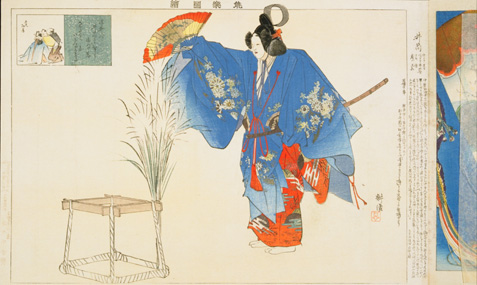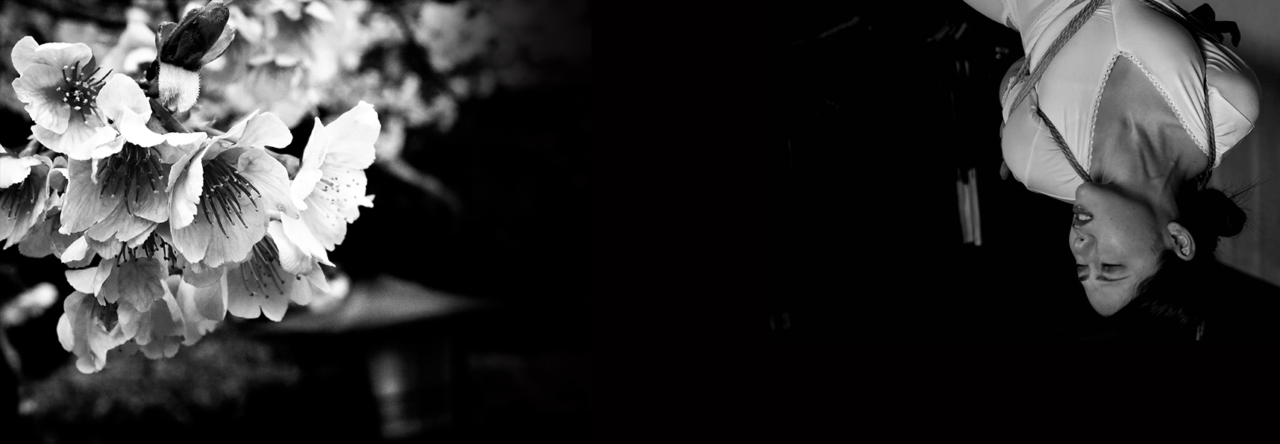Engi (演技) means “performance” of Ukete, that is, the active participation of the model. The emotional expression is thus intensified. This is also a challenge for Ukete, because the guidance by Bakushi leaves more room.
The term goes back to ancient theatrical traditions, such as in Noh theater. The artist Zeami Motokiyo describes one of the highlights of the performance as “letting the flowers blossom”. By this he means the emergence of a special intensity in the actor’s performance. This is particularly difficult to achieve in Noh because the actors always wear masks. Thus, they cannot use their facial expressions, but can only express emotional states through their movements and their voice.

Similar to noh theater, shibari is about expressing emotions through engi. The minimalism of the yukimura-ryû resembles the mask in front of the face of the noh actor.
Only through years of practice it is possible to perfect this engi. On the one hand, the communication with the bakushi, on the other hand, the expression to the audience plays an important role. Only through the dynamic between Bakushi and Ukete also a suitable Engi is created.
Ukete must find the balance between his own Engi and the guidance of Bakushi. The space allocated to Ukete must be respected, but should be fully explored. To achieve this, slowness is important, as this gives Bakushi enough time to intervene should Ukete exceed the limits of space.



